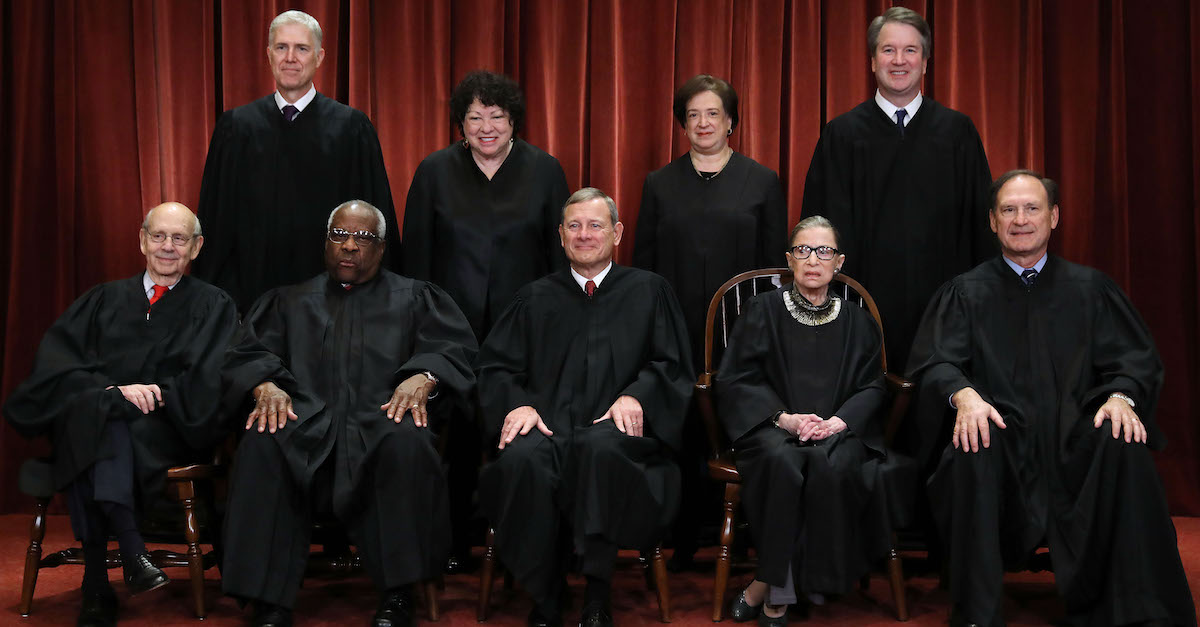
Call me a starry-eyed idealist, but I really think the towering legal minds on the U.S. Supreme Court should be spending their time deciding questions of law that wouldn’t be obvious to the average American. Analysis of the precise boundaries of legislative or executive authority, the correct timing for expansion of individual liberties, and the evolving significance of the philosophies of the founding fathers are ripe for the input of our nation’s top jurists. By inane contrast, the question, “is a cross really a symbol of Christianity?” seems too stupid to even have found its way into a municipal courtroom.
Still, American Legion v. American Humanist Association landed on the high bench, where it apparently baffled seven justices. The case presented the question of whether a 93-year-old cross-shaped World War I memorial in Maryland violates the Establishment Clause of the Constitution. The monument is often referred to as the “Peace Cross” and the “Bladensburg Cross.” Some non-Christian county residents sued, arguing that government maintenance of the memorial, located on a traffic island, constitutes an illegal endorsement of Christianity.
SCOTUS ruled in the case Thursday, and by “ruled,” I mean that Justices Samuel Alito, Neil Gorsuch, Clarence Thomas, Brett Kavanaugh, Stephen Breyer, and Elena Kagan each wrote their own opinions, leaving Ruth Bader Ginsburg and Sonia Sotomayor to dissent. Chief Justice John Roberts joined the 7-2 majority opinion. While seven justices agreed that the memorial should stand, there was almost no agreement as to why– or about how similar questions should be decided in the future. Some have described the opinion of the court as “scrambled.”
If the underlying question about crosses generally was ridiculous, the majority’s answer was positively asinine. Justice Alito began the majority opinion on a sour note, as he described the lawsuit as having been filed by people who were, “offended by the sight of the memorial,” as if recognizing potentially illegal government activity is somehow on par with calling out poor table manners. Apparently, as far as Alito is concerned, only delicate snowflakes are interested in ensuring government compliance with the First Amendment.
The justice then launched an unconvincing twelve-page history lesson about the historical non-religious significance of crosses, culminating in his final premise – the religious can become so intertwined with the historical as to make it worthy of government preservation. That point is fair in a general sense, but doesn’t really relate to what’s at issue in this case. Now’s also a good time to point out that the “government shouldn’t endorse any particular religion” rule isn’t up for debate. Alito and anyone else who’s getting hot and bothered about the liberal War on Christianity should take it up with Alex Hamilton and James Madison, because the neutral-state thing was their idea.
Alito continued on, almost sounding like a progressive thinker, writing that “the passage of time may have altered the area surrounding a monument in ways that change its meaning;” that change, according to Alito, might bring up new reasons to preserve the monument – but couldn’t possibly raise arguments to tear it down. So much for interpreting symbolism in proper context. The biggest eye-roll moment came when Alito said that the cross must have been inclusive, because one of the guys behind the memorial’s design was a Jewish veteran.
Justice Breyer, joined by Kagan, positioned himself on middle ground, anchoring his concurrence in the fact that no one has complained about the Maryland memorial for almost a century, so it couldn’t really be all that much of a problem. Kavanaugh also stepped in with his own Solomonic solution – the State of Maryland should just decide to remove the memorial on its own, since it’s bothering people so much. Kavanaugh may have agreed that the case at hand didn’t manifest a First Amendment violation, but neither was he entertaining the majority’s “crosses are secular” premise; Kavanaugh wrote, “It would demean both believers and nonbelievers to say that the cross is not religious.” Brett wouldn’t have been my guess for Best Reasonable Pragmatist here, but I suppose we should take what we can get.
RBG and Sotomayor banded together in a dissent that can be summed up as “oh, come on.” Of course the Latin cross is a religious symbol, of course it is only a Christian symbol, and of course, it violates the Establishment Clause for that reason. Ginsburg dissented as follows:
Just as a Star of David is not suitable to honor Christians who died serving their country, so a cross is not suitable to honor those of other faiths who died defending their nation. Soldiers of all faiths “are united by their love of country, but they are not united by the cross.”
Ginsburg went with a reminder that no one’s saying the memorial needs to be torn down and thrown away; it could be relocated, or the land could be sold to a private owner. Truly, American Legion v. American Humanist Association is a monument to the obtuse. Those clawing to keep Christianity at the center of American government are even willing to argue the absurd – that Christ’s crucifixion isn’t what’s represented by the Christian cross.
[image via Chip Somodevilla/Getty Images]
This is an opinion piece. The views expressed in this article are those of just the author.